A Slice of Pie: Photographer Pie Aerts Talks Storytelling & Travel
To find the big picture, Aerts zooms in.
The post A Slice of Pie: Photographer Pie Aerts Talks Storytelling & Travel appeared first on Sharp Magazine.
Pie Aerts lives the sort of life most can only dream of. Originally from the Netherlands, Aerts works as a documentary and wildlife photographer. As his globetrotting portfolio suggests, Aerts’ career has brought him across many a continent. From abandoned farmsteads in Patagonia and the lush forests of Rwanda to snow-covered Siberian encampments, Aerts has seen — and captured — some of the world’s most sensational sights.
These cinematic surroundings compose only half the project, however. The photographer finds inspiration in a sweet spot “where people and place have a shared narrative.” In other words, the subjects and the scenery are inextricably linked — and their personalities, actions, and interactions afford newfound depth to every image.
“If you want to save nature, you should focus on people […] If people feel safe, appreciated, and respected, only then will there be space to consider the protection of nature.”
Pie Aerts
“I always take on a hopeful approach to that situation: coexistence over conflict and hope over tragedy or hope over despair,” Aerts tells Book For Men. “I’m finding stories that don’t necessarily scream for attention, but have very personal, small, intimate angles that represent a bigger narrative. I always call it ‘whispering stories over screaming stories.’ In essence, it’s always focusing on the positive side — the fabric between human beings and the origin of where they come from, and a hopeful approach to issues of our times.”
It’s easy to pick up on this; with a mere handful of images, Aerts tells dozens of stories. As he walks me through each photo, Aerts recounts the details — of climates, cultures, and companions — with striking intimacy. So, though the settings range from steamy South Pacific islands to frigid Russian peninsulas, every picture feels inexplicably familiar.
Villager in Indigo-Dyed Garment (Bali, Indonesia)
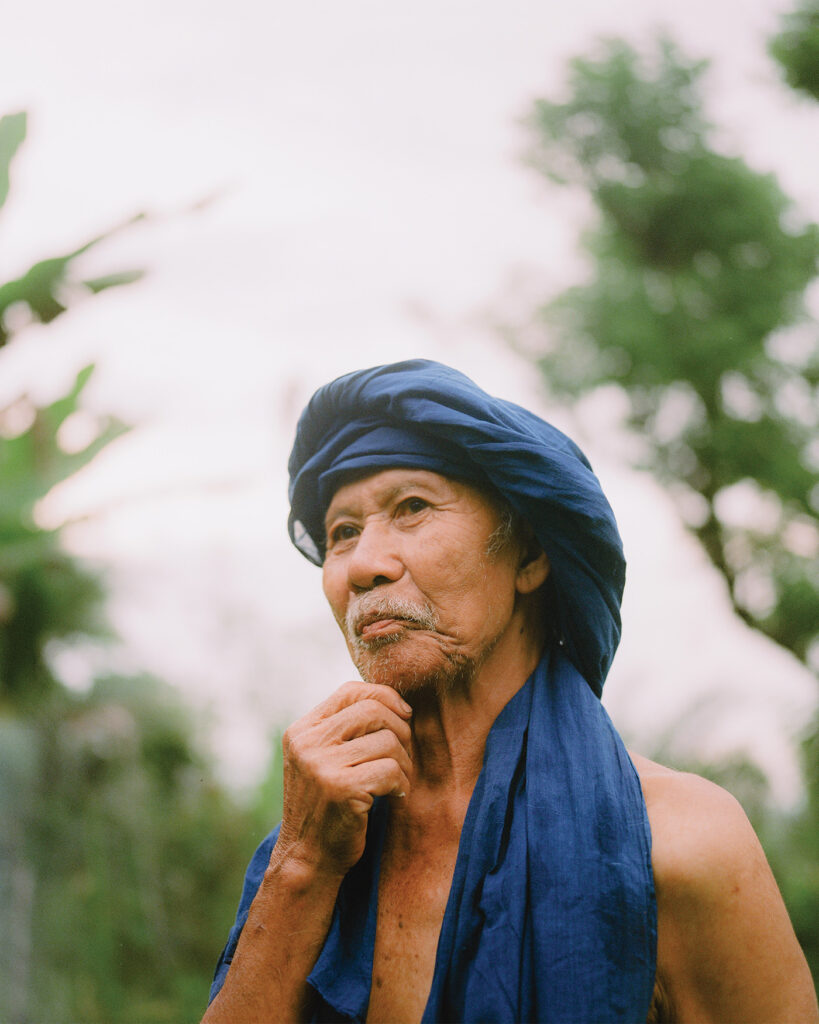
“I made it my little personal mission to see if I could photograph as many ancient places and practices as possible. This, for sure, is one of them. This valley is historically known to be very fertile, very pristine, and the plants that grow in the area deliver some of the best natural indigo dye paste in the world. In a lot of Indigenous communities, you see lots of traditional and authentic crafts, and I’ve always had a weak spot for exploring those avenues.
So, when I was in Bali, I was doing research and I bumped into a man called Sebastian Mesdag. By origin, I think he’s half-Dutch and half-Spanish, but he’s been living in Bali for the last 30 or 40 years, running a natural indigo studio. He uses dye paste made from indigo plants to colour fabrics — the fabrics you can see in this image are coloured by the Mesdag studio.
Mesdag has his own little valley of indigo, where he harvests the plants and goes through the entire process — 100% organic and natural — to create the pastes that he uses to colour the fabrics. I did a story for him about his dyeing studio, and how he integrates Indigenous Balinese beliefs into practising this centuries-old craft. We ventured into the local villages and photographed some of the local village people wearing these naturally dyed garments. So, this image was shot in the context of doing a story about that — that craftsmanship of using indigo plants.”
Gaucho and Horse (Southern Patagonia, Chile)
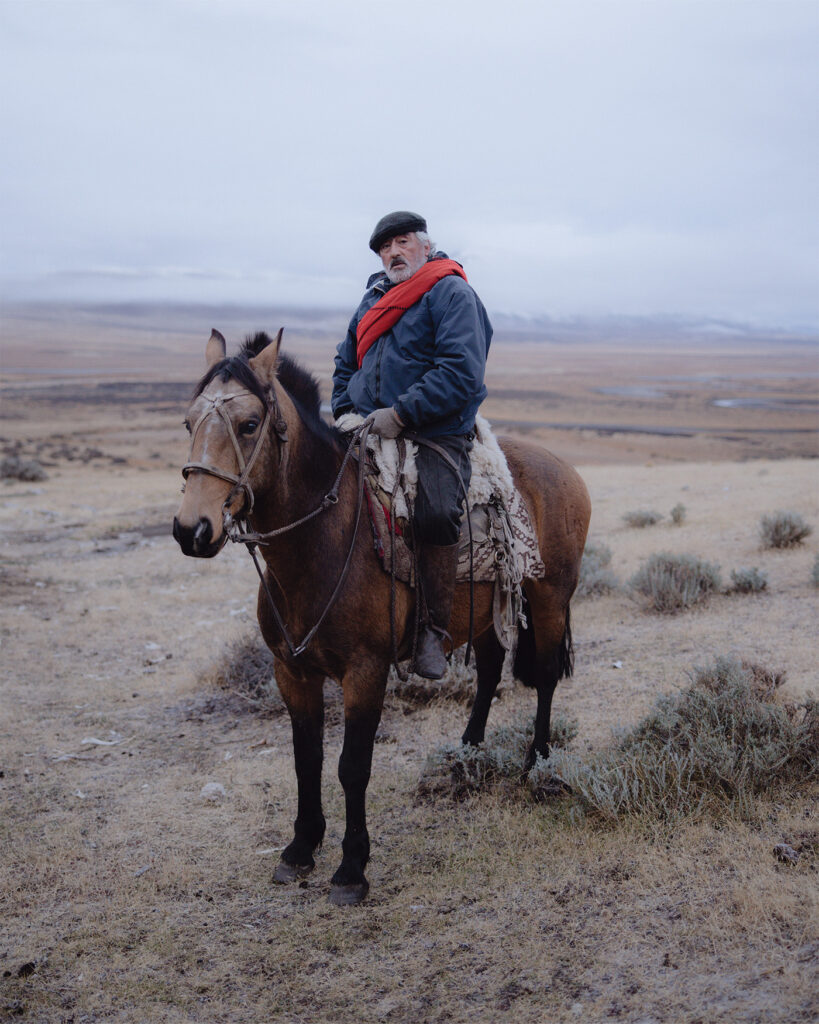
“This is an image — not only an image, but a whole story — that is very dear to me. I’ve been working on this story for five years in the southern Patagonia region of Chile, and it’s a subject that I could speak about for a long, long time.
This particular photo is almost like a poetic document, for the fading identity and disappearing lifestyle of the gaucho — which is like a stoic, over-romanticized cowboy. It’s also part of a multi-platform, multidisciplinary, long-form telling of this story with a team of filmmakers. We’re trying to unravel and unpack the image of a “cowboy,” and see if we can find intimate portraits of what actually happens within this culture.
Southern Patagonia is an incredibly stark region — very remote and desolate. These guys live in complete isolation. So, for the past five years, we’ve been filming a group of these gauchos who live in abandoned farms in the south of Chile. We’ve been trying to understand how they’re dealing with losing this identity, with knowing that they are the last generation of gauchos who will live this way.
It’s very multi-dimensional, and one image could never get across the whole story. It’s going to be my next book, which will hopefully be released sometime in mid-2025. And, at the moment, this is for sure my most important, and my most crucial story. My approach has always been one of long-term commitment to the subjects, and this, for sure, is a good example of that.”
Changpa Nomad (Ladakh, India)
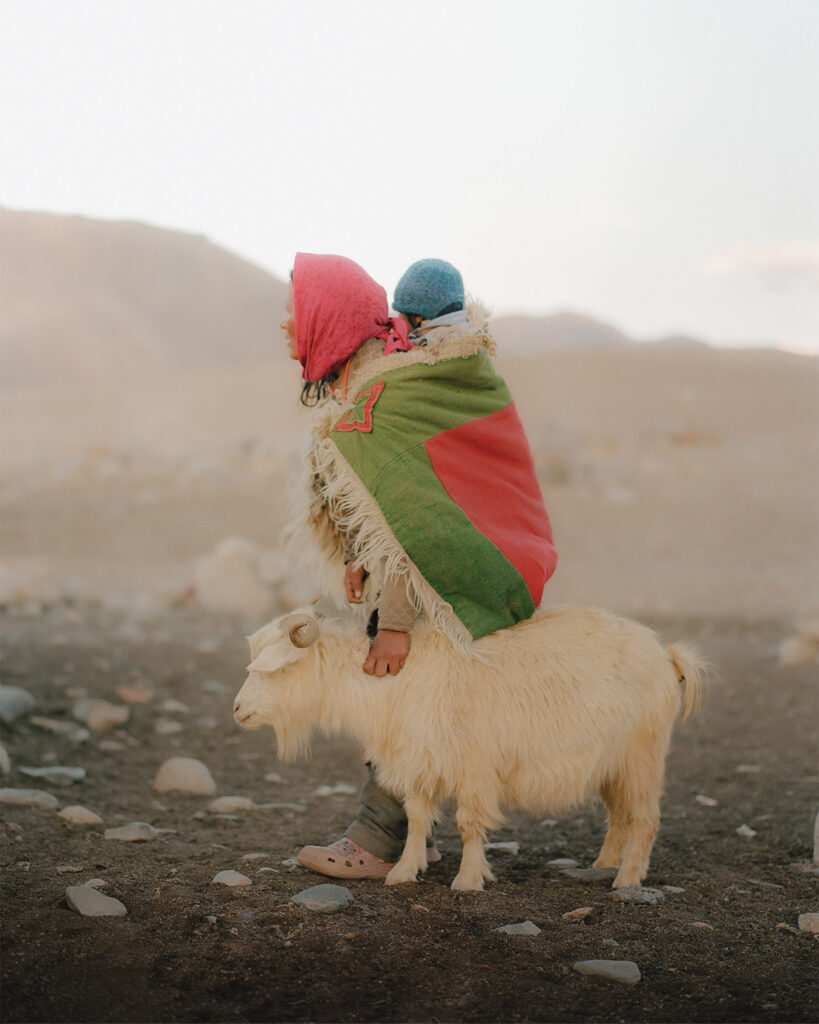
“This image, from India, is shot in a place where I’ve been doing work for almost three years — it’s a place called Ladakh. It’s an area in the north of the country, between the Pakistani and Chinese borders. Because of that, it’s a very high-tension area, for obvious reasons. It’s Indian territory, but it’s also a state with a very deep and rich history.
The people I’ve been working with in this area are called Changpa nomads — the woman in this image is a Changpa nomad. In essence, they are kind of refugees who first came into the country from Tibet after the exile [by the Chinese government] in 1959. Now, they’ve been welcomed into the parts of India where they settled. This is now the third generation of Changpa nomads, and the story I’m doing here is about the fading identity of this semi-nomadic tribe.
The woman in this image belongs to one of the villages — villages that are currently going through immense pressure from the outside world. All different kinds of sources are having a negative impact on the Changpa nomads — from capitalism to religion. And, as a result, they believe that their relationships with the spirits are being disturbed. This story is mostly about the disturbance of that spirit and how they believe that climate change is the result of the disturbed relationship between them and the guardian spirits. I could talk about it for days, or weeks, but that’s a short introduction to this image.”
Woman Carrying Flowers (Hà Giang Loop, Vietnam)
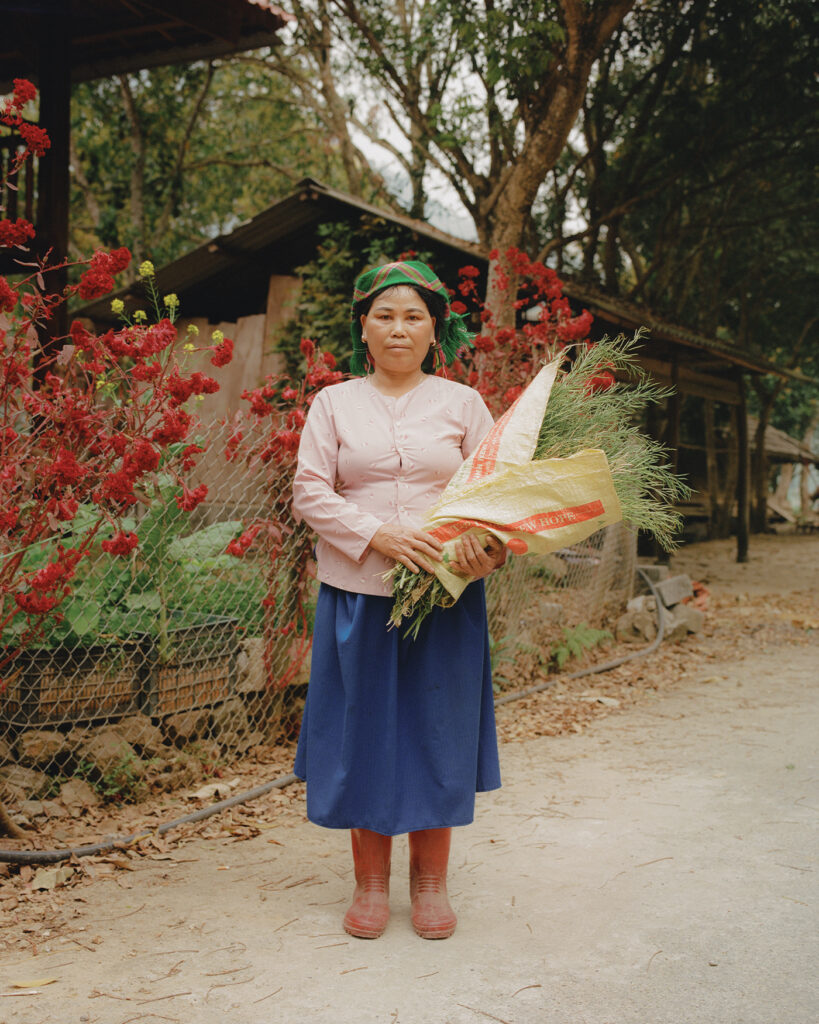
“This photograph was commissioned for a story about a road trip in the north of Vietnam, a route called the Hà Giang Loop. We took the photo — of a woman carrying flowers — in the Hà Giang area. We’d been doing human interest stories on the people living along that loop, and how they perceived the boom in tourism that’s happened there during the past 10 years.
It’s an area all the way up north, by the Chinese border. It’s very rural, but still quite developed if you compare it to many of the other places I’ve been to. But I keep going back because the people are incredibly welcoming and it’s a beautiful, diverse region. You can feel the influences of China, you can feel the culture coming from Laos and Myanmar. It’s kind of a mix of all these South Asian places in one region.
Vietnam is very dear to my heart. A couple of weeks ago, I received a beautiful email from a woman who was from Vietnam, but was living in Europe and didn’t have the means to get back to her home country. It was about another image of mine that taps into the nostalgic spirit of Vietnam as a country, and also Hanoi as a city. She said in the email that the photo provoked a strong sense of belonging to a home country in her. Seeing the image almost made her cry, and brought up memories of her childhood. And that shows the true power of storytelling — of visual, photographic storytelling — on an emotional level.”
Member of the Nenets Tribe (Yamal Peninsula, Russia)
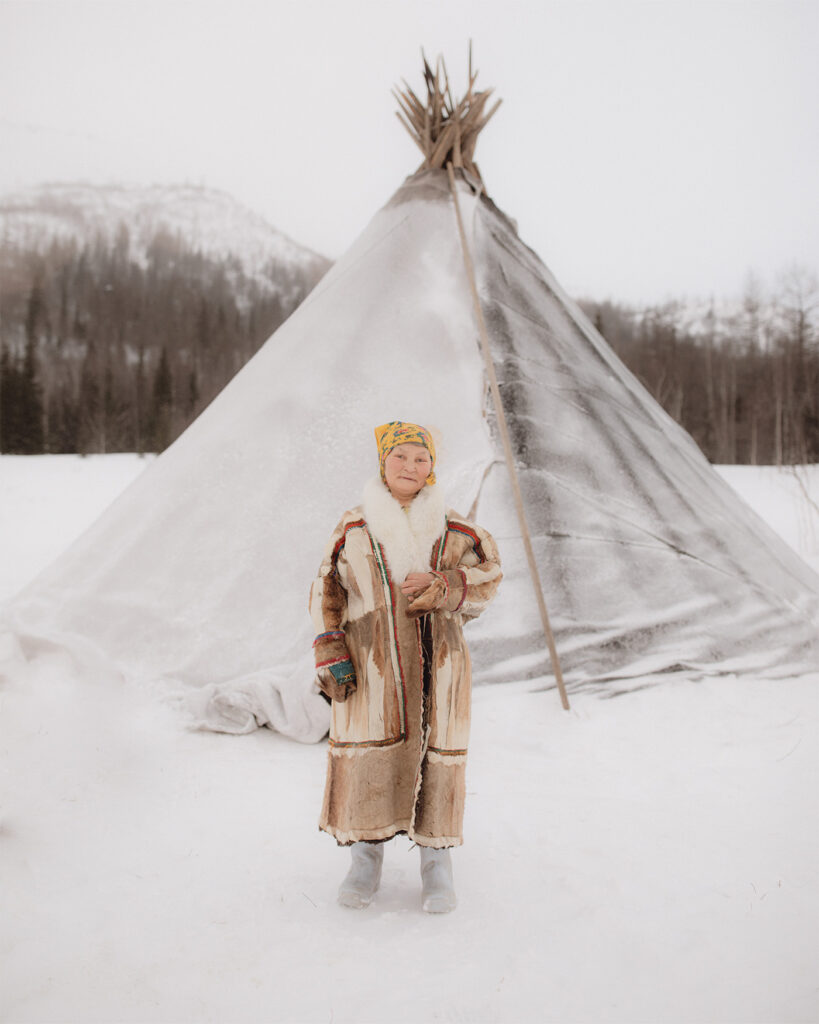
“This image was shot on the Yamal Peninsula in the north of Siberia. I was there in March 2020, in the last four weeks before international airspace was closed due to COVID-19. We spent weeks with these semi-nomadic reindeer herders called Nenets, who pack up everything to migrate from their summer to their winter grounds. There’s heavy external pressures on this culture, from illegal deforestation to heavy mining and oil drilling by the Russian government, all of which have a very destructive impact on the migration patterns and well-being of these people.
I was lucky enough to spend a few weeks living with them in some very small communities in the middle of winter, travelling on the back of snowmobiles. The tent you see in the background is called a chum, which is around 10 metres in diameter, but incredibly warm inside due to a stove in the middle. Outside, temperatures can easily drop to -30ºC.
But these people have developed an entire culture built on knowledge and values that are essential to survival. Anything that is non-essential has not developed. For example, their language doesn’t have words for emotional conversations, as they are non-essential to survival. But the people were incredibly welcoming, some of the sweetest people in the world living in crazy conditions. It always blows my mind to see, especially in these places, that people have the most welcoming spirits and attitudes. They’ll always want to share what little food they have.”
Tea Picker (Nyungwe Forest, Rwanda)
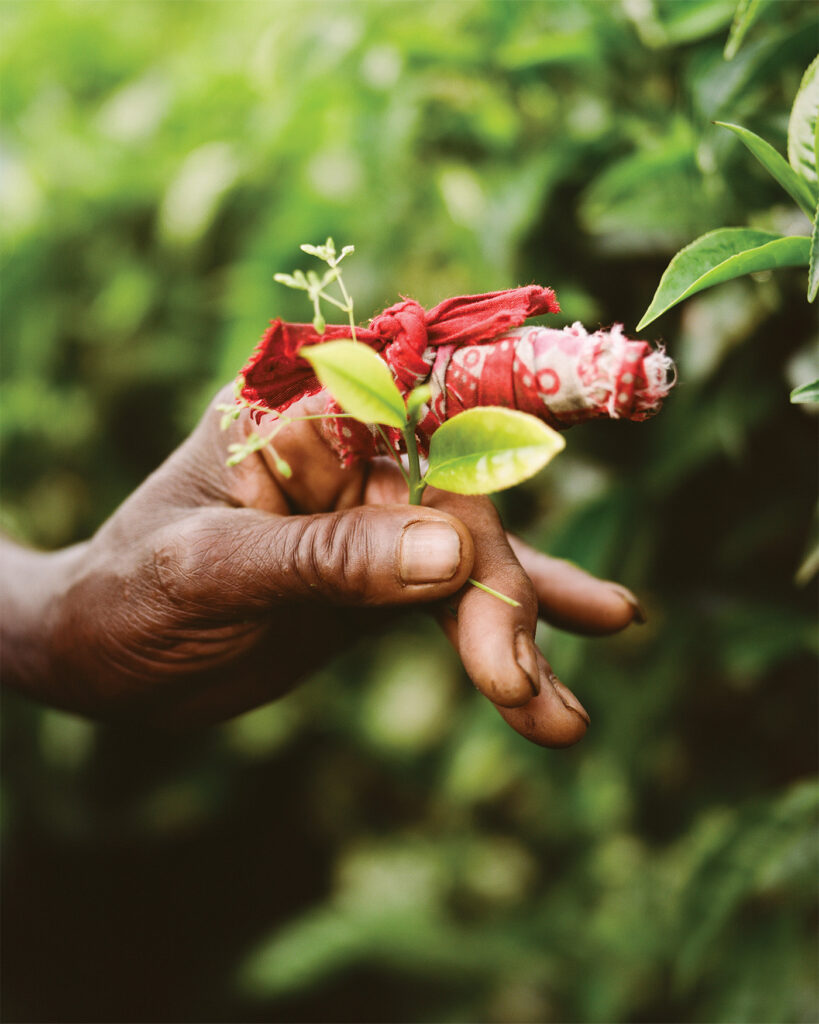
“This image was taken in Rwanda, when I was on assignment for an organization called African Parks, an NGO that does a lot of work at the intersection of humans and wildlife. Their philosophy is very much a “people first” approach to nature, and they believe that if you want to save nature, you should focus on people. I agree. If people feel safe, appreciated, and respected, only then will there be space to consider the protection of nature.
African Parks is operating on the front lines of that belief and, in Rwanda, they manage two national parks in that way. Here, you’re seeing the hand of a picker — one of thousands — who works in the highlands on the border of Congo and Rwanda. They pick tea and then the villages in which they live are supported by the sale of the tea leaves. It’s mostly exported, and it’s happening in a region that borders national parks, so there’s lots of wildlife. But, as it’s also an ex–conflict zone, there’s also a lot of tension.
The people there told us stories and talked about what it meant to live next door to one of these protected national parks, and how they have benefited from African Parks’ presence. The stories are really amazing. We learned what happened to these people, how supported they feel, and how African Parks has caused economic participation. There are so many beautiful things happening there. Once again, it’s a hopeful approach to a bigger story.”
All photos courtesy of Pie Aerts.
The post A Slice of Pie: Photographer Pie Aerts Talks Storytelling & Travel appeared first on Sharp Magazine.
